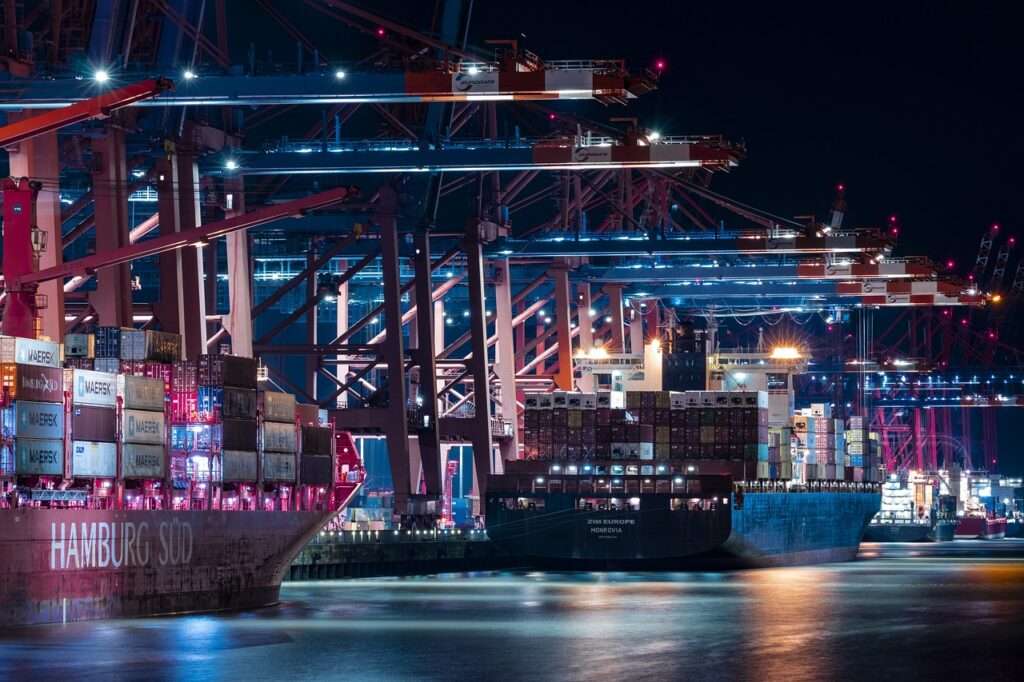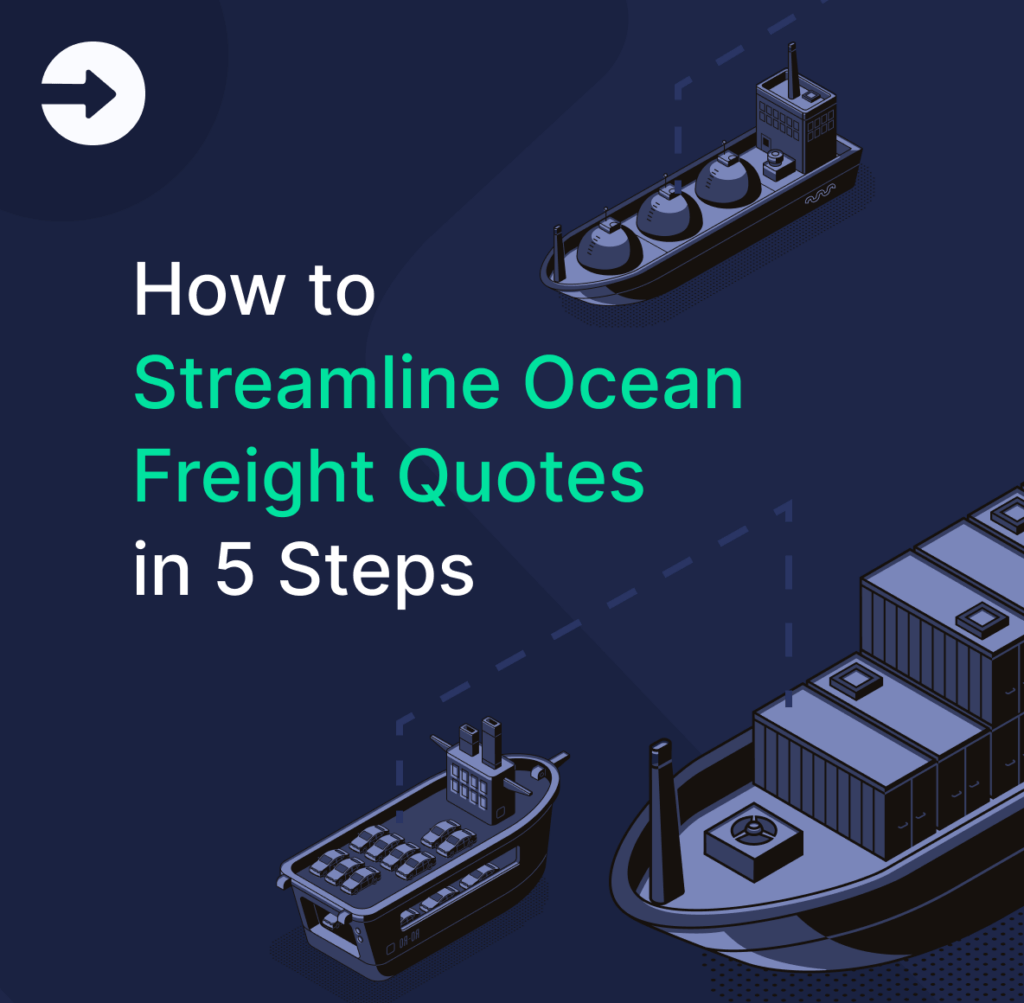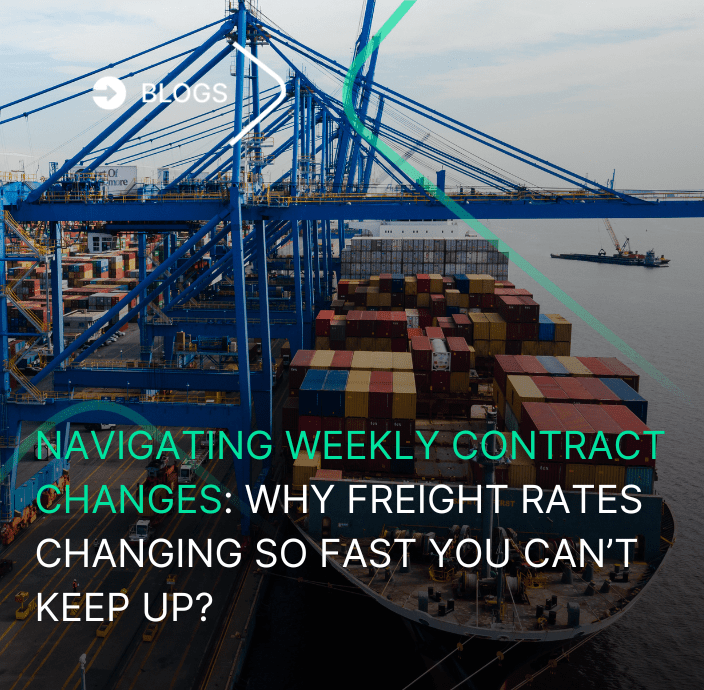In today’s logistics landscape, modernizing operations isn’t just an option—it’s a necessity. The real question isn’t if you should use freight visibility software, but which features you need to stay competitive and efficient. Choosing the right software can really transform your operations, but it’s all about knowing which features matter most.

To truly optimize your supply chain, it’s essential to look for a Freight Visibility Software that integrates features such as real-time tracking, carrier connectivity, port terminal visibility, automated alerts, data analytics, integration capabilities, user-friendly interfaces, scalability, seamless onboarding, customer service, and data privacy.
These functionalities are crucial not just for tracking freight, but for gaining comprehensive control over your rates and operational efficiency.
In this article, we’ll dive into each of these features and explain why they are critical to success in logistics for freight forwarders.
But before we break down those features, let’s first explore why real-time visibility is so crucial for the entire supply chain, especially for freight forwarders, and how it plays a key role in modern logistics.
What is supply chain visibility?
Supply chain visibility refers to the ability to gain clear, real-time insights into every aspect of your business operations.
It’s about understanding not just where your products are, but how every element of your supply chain is functioning—from procurement and inventory management to transportation and delivery.
Effective visibility means harnessing technology to collect and analyze data from various points within the supply chain.
This comprehensive perspective allows organizations to identify inefficiencies and anticipate potential disruptions before they escalate.
For more on this topic, check out “The Secrets to Achieving Supply Chain Visibility”.

Why Visibility in Ocean Supply Chains is Essential for Freight Forwarders
In the complex world of ocean freight, achieving supply chain visibility (SCV) is crucial for navigating various challenges. Here’s why it matters:
- Comprehensive Rate Visibility: Gain insights into fluctuating freight rates, helping to negotiate better contracts and optimize costs.
- Schedule Transparency: Access real-time shipping schedules to prevent delays and improve planning.
- Route Clarity: Clear information on shipping routes allows for proactive management of potential disruptions.
- Data Accessibility: Centralized and easily accessible data enables informed decision-making across all levels.
- Enhanced Communication: Improved collaboration among freight forwarders, carriers, and customers facilitates smoother operations.
The Benefits of Supply Chain Visibility
Enhanced visibility in ocean supply chains not only transforms logistics operations but also drives overall business improvement. Here are the key benefits:
- Cost Savings: Enhanced management of rates and routes leads to significant reductions in operational expenses.
- Improved Customer Satisfaction: Timely shipment updates and transparent communication foster stronger relationships and customer loyalty.
- Increased Agility: Quick adjustments to shipping routes and schedules enable better responsiveness to unexpected market changes.
- Scalability: The ability to grow and adapt to increasing shipment volumes without compromising service quality or efficiency.
- Strategic Insights: Enhanced data access allows for better forecasting and informed decision-making, driving competitive advantages.
While these benefits demonstrate the value of supply chain visibility, it’s crucial to focus on the key features a modern visibility software must have to ensure smooth operations and stay competitive in the logistics industry.
Key Features to Look for in Supply Chain Visibility Software
1. Carrier Connectivity
Carrier connectivity enables direct integration with multiple carriers. It provides access to real-time schedules, rates, and carrier performance data.
With this data, freight forwarders can automate carrier selection. They choose the best carrier based on shipment needs, availability, and cost.
This feature reduces time spent on manual research. It allows for faster decision-making with up-to-date information.
As a result, freight management becomes more efficient, and forwarders gain flexibility in operations.

2. Data analytics
Understanding your logistics operations in detail is crucial for making better decisions. Analyzing shipment patterns, carrier performance, and cost fluctuations helps you identify trends and opportunities for improvement. This leads to smarter, data-driven decisions and reduces inefficiencies.
With customizable reports, freight forwarders can focus on the data that matters most to them. Whether it’s tracking delivery times, monitoring costs, or measuring carrier reliability, you can tailor the insights to your specific needs. These reports help you make real-time adjustments, streamline processes, and save on costs—all while staying competitive in a fast-paced market.
3.Port Terminal Visibility
Achieving full visibility in port operations can be challenging due to outdated technologies and the complexity of coordinating multiple stakeholders. However, as highlighted in this article on ocean container tracking, port terminal visibility is crucial for freight forwarders to monitor container movements in real time. This helps mitigate common issues like congestion, delays, and unexpected charges.
By accessing real-time terminal data, forwarders can better plan drayage operations, avoid demurrage fees, and ensure timely container pickups.
4. Real-time tracking
Real-time tracking allows freight forwarders to monitor shipments throughout their journey, providing updates on location, delays, and estimated time of arrival (ETA). This enables proactive adjustments to schedules, improving operational efficiency.
Why Real-Time Tracking is Crucial for Freight Forwarders?
Imagine a critical shipment delayed unexpected conditions. Without real-time tracking, you’re left guessing until it’s too late. This lack of visibility causes missed deadlines, unhappy customers, and higher costs.
With real-time tracking, forwarders gain visibility into shipments, enabling faster decision-making. It minimizes delays and gives customers timely updates, building trust and boosting satisfaction. In the long run, this reduces costs and improves business efficiency.
Cargofive empowers you to track your cargo anytime, anywhere, with just three simple clicks—keeping you ahead of potential disruptions.
5.Automated alerts
Automated alerts eliminate the need for manual tracking by sending real-time notifications for important events. These alerts allow logistics teams to respond quickly to disruptions, ensuring that operations stay on track. With customized triggers, teams can set up alerts based on specific milestones or issues, improving responsiveness and minimizing delays.
As logistics becomes increasingly complex, automation and digitization are not just trends—they’re essential. Automated alerts streamline processes and enable faster decision-making, keeping supply chains agile and efficient.
6. Smooth quotation process
Efficiently generating accurate quotes is crucial in the fast-paced logistics industry. With advanced freight visibility software, rate comparisons are automated, allowing your team to produce quotes in seconds and streamline the entire process, eliminating manual, time-consuming tasks.
Having real-time access to rates ensures you can instantly pull up the most competitive options, enabling faster and more accurate responses to inquiries. This is a core part of a modern and integrated freight procurement process. For a closer look at how real-time data integration enhances quoting, check out unleashed this article on real-time data integration.
By leveraging the right tools, you’ll not only simplify quoting but also avoid sales delays, improve customer satisfaction, and close deals faster.
7. Integration Capabilities
The future of logistics is driven by digitalization, integration, and workflow efficiency. To ensure smooth operations, the software you choose must integrate seamlessly with the tools you already use, like ERP or TMS systems. This connectivity ensures a continuous flow of information, minimizing disruptions and keeping operations fluid.
Integration capabilities allow for greater flexibility, enabling your business to adapt quickly to changing needs. With different systems working together, your team can focus on managing shipments efficiently.
8. User friendly-interface
Visibility, digitalization, and transformation are only as effective as the tools you use to manage them. Without an intuitive interface, even the most advanced software can become a burden instead of a solution. The real power of freight visibility software lies in its ability to simplify and streamline operations, ensuring your team can work efficiently without being slowed down by complexity.
When choosing your software, it’s not just about the features it offers but how easy it is for your team to use them. An intuitive design means less time spent figuring out how things work and more time focusing on what really matters—getting the job done.
As Karina López from Vesta Forwarding puts it, “Cargofive is a very user-friendly application, very intuitive; you open the phone and you have everything at your fingertips.” You can explore more about their experience with us in this case study
9. Seamless onboarding & Customer service
A user-friendly interface is just the beginning. To make sure your team can fully benefit from the software, seamless onboarding is key. The easier the setup, the faster you can start optimizing your operations without interruptions.
Strong support is just as crucial. You need a provider that’s always ready to help and offers clear guidance from day one. Whether it’s resolving issues quickly or providing ongoing assistance, good support keeps everything running smoothly.
At Cargofive, we pride ourselves on guiding customers through their digital transformation. See how we supported MPG Logistics in their journey here.
10. Scalability
As your business grows, your software needs to grow with you. Scalable freight visibility software adapts to handle more shipments, new routes, and expanding customer demands without losing efficiency. Whether you’re managing a few shipments or thousands, scalability ensures your system can keep up with fluctuating demands.
A truly scalable platform allows you to grow without costly upgrades or disruptions, giving you the flexibility to stay competitive in a fast-changing market.
Final Considerations to Maximize Visibility in Freight Operations
Types of Supply Chain Visibility Solutions You Should Consider
- Transportation Management System (TMS)
- Rate Management Software(RMS)
- Supplier Relationship Management (SRM)
- Enterprise Resource Planning (ERP)
- Real-time tracking systems
Before Committing to a Solution
Before choosing any software, take the time to thoroughly assess your current operations. Identify your pain points—whether it’s real-time tracking, cost management, or operational inefficiencies. Ensuring the software aligns with your business goals will help you achieve long-term success.
Free Trial
Take advantage of a free trial to ensure the software fits your needs and integrates well with your existing systems. Testing the platform will allow you to assess its usability, flexibility, and value before making a full commitment.
For instance, you can try out Cargofive’s comprehensive Freight Rate Management Platform here for free.
Key to Growth
At the end of the day, gaining greater visibility isn’t just a nice-to-have—it’s the key to driving growth and staying ahead in the logistics industry. By implementing the right tools, you’ll not only optimize your operations but also create more efficient, scalable processes that allow your business to thrive. Ready to take that step?
AUTHOR



